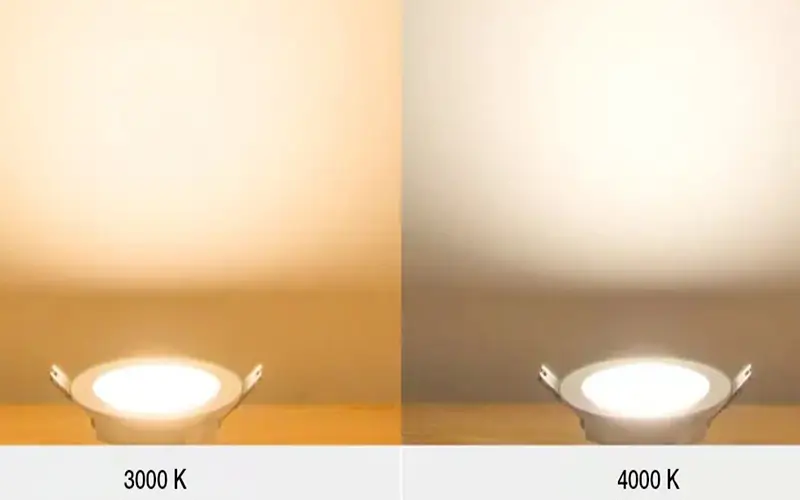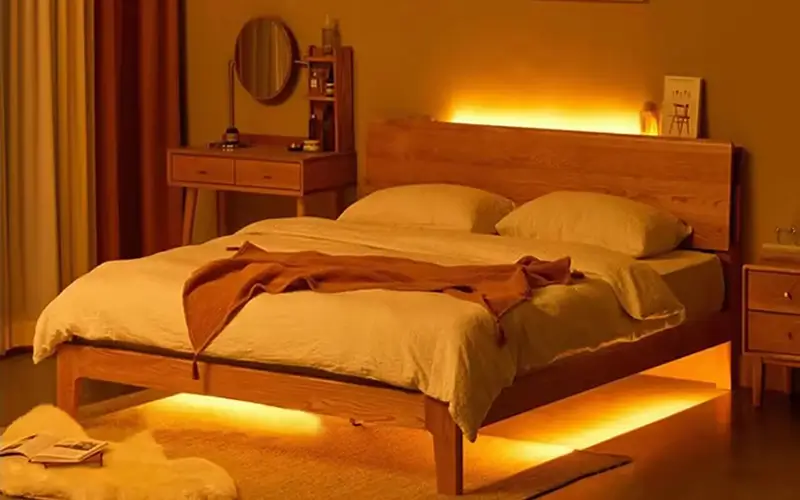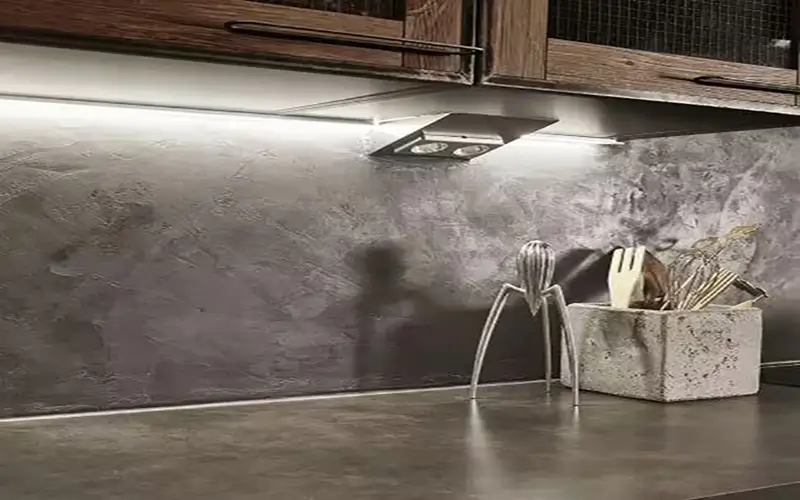
When people buy LED lights, they need to pay attention to their color temperature, which refers to the color of the light. Because different color temperatures can affect people’s moods. Many people are confused about the difference between 3000K vs. 4000K light color temperature. This article is mainly to understand the difference between 3000K vs. 4000K.
What is 3000K Light?
A color temperature of 3000K is a warm color. It is characterized by a warm, soft glow. Any color below 3200K is generally classified as a warm white. There is no doubt that 3000K light emits a warm white hue, often referred to as soft white. Which is characterized by its appearance being less yellow than 2700K.
LED bulbs and LED strips typically operate in the 2700K to 3000K Kelvin range. This color temperature is reminiscent of a sunset and provides a more intimate and comfortable atmosphere in our daily environments.

What is 4000K Light?
The color temperatures of 4000K and 5000K can be regarded as transitional stages. People often compare the difference between 4000K vs. 5000K. Here, warm white tones of 2800K-3200K transition gradually to daylight tones of 6000K-6500K. When the light temperature reaches 6500K, it emits the brightest white light.
4000K lighting strikes a balance between warm and cool colors, providing lighting that is neither too dark nor too bright. 4000K Kelvin light, often referred to as natural or neutral white light, meets the comfort and practical needs of residential or commercial spaces.

3000K vs. 4000K Light Color Temperature
3000K vs. 4000K are both popular color temperatures, whether indoors or outdoors. The contrast of 3000K vs. 4000K is similar to the contrast of soft white light versus daylight.
3000K
3000K light is white with a yellow tint, giving off a warm, inviting light. This color temperature is perfect for creating a cozy atmosphere in areas such as your living room, bedroom, or dining room.
This color temperature is perfect for spaces where you want to relax and unwind. Warm light is soothing and can help you create a calm and peaceful environment.
4000K
And 4000K light is close to light white, not too warm and not too cold. It’s the perfect blend of warmth and brightness. It is mostly used in kitchens, bathrooms, home offices, and work spaces. These are areas where you need to stay awake to improve concentration.
Ideal for modern or minimalist interior designs, 4000K LEDs can complement a sleek and clean look, giving your space a contemporary feel.
How to Choose 3000K vs. 4000K Light?
Choosing between 3000K vs. 4000K lights requires consideration of several factors, including your personal needs, installation goals, and environment.
- Lighting Purpose: Consider the specific requirements of the space or application where the lighting will be installed to determine the color temperature that best suits your needs.
- Personal Preference: Personal preference is very important. Some people prefer the warm, cozy feel of the 3000K, while others prefer the vibrant and modern vibe of the 4000K.
- Compatible lighting: Check the surrounding lights to see which color temperature can better blend in and be more harmonious.
What Color Temperature is Recommended for Indoor?
Bedroom (3000K-4000K)
The bedroom is the main space for rest and relaxation. You can choose 3000K or 4000K. 3000K will make people feel warm and comfortable, but you can also use 4000K for reading before bed, which can provide visibility without feeling too dazzling.
Room corridor (3000K)
Room passages and each corridor can be installed with 3000K. It makes people feel comfortable and warm, and it also has a certain degree of visibility.
Living room (3000K-4000K)
The living room is mainly the main area for family members to relax and watch TV. Therefore, lighting requirements mainly favor bright and warm natural light. In addition, some LED track lights, light strips, and other ambient lights can be installed next to the ceiling to create a warm atmosphere.

Restaurant (4000K)
The restaurant is a dining area, and 4000K is needed to see the color of the food clearly. At the same time, it doesn’t feel too bright and makes people feel deserted. 4000K is a very suitable light.
Kitchen (4000K-6000K)
The kitchen is an area where ingredients are prepared, and a certain degree of visibility is required to see the food clearly. and perform activities such as food preparation, chopping, cooking, and dishwashing in a coordinated workflow. It is recommended to choose a color temperature in the range of 4000-6000K.
Bathroom (4000K)
In bathrooms and changing rooms, it is recommended to use higher intensity lighting around 4000K. This will brighten the space as a whole, provide better lighting when looking in the mirror, and allow you to accurately detect your skin tone and clothing.
In summary
3000K vs. 4000K are both popular color temperatures for LED lamps, and they are both color temperatures that people will struggle to choose. Choosing between 3000K (white with a yellowish tint) and 4000K (light white tint) depends on the specific needs and goals of the lighting application. You can choose the appropriate lighting color temperature by understanding the characteristics of each color temperature. Will enhance the overall aesthetics and functionality of your lighting design.
FAQs
3000K and 4000K color temperature are emitted by the light source. 3000K is a warm yellow color, while 4000K is a neutral light, not too warm and not too cold. The main difference is the perceived warmth or coolness of the light emitted.
Both 3000K and 4000K are suitable for residential lighting, and most of them choose both color temperatures at the same time. Mainly, it comes down to personal preference and desired ambience. 3000K creates a cozy atmosphere, perfect for living spaces, while 4000K provides brighter lighting, perfect for task-oriented areas such as kitchens and bathrooms.
While both 3000K and 4000K lights produce plenty of brightness, 4000K lights will appear slightly brighter. Because it doesn’t have a yellowish tint, which of course also depends on the brightness of the lamp.
That’s, of course, 4000K light, which is often the go-to for office lighting because it provides a neutral yet energetic atmosphere that’s good for productivity and focus. Of course, some people have installed 3000K in the office so that employees can relax during their breaks.
Due to its warmer tone, 3000K light is often considered more relaxing and comfortable. It is therefore more suitable for bedrooms, lounges, and other areas where relaxation is a priority. 4000K light, while not as warm, still provides a comfortable ambience for many people.
